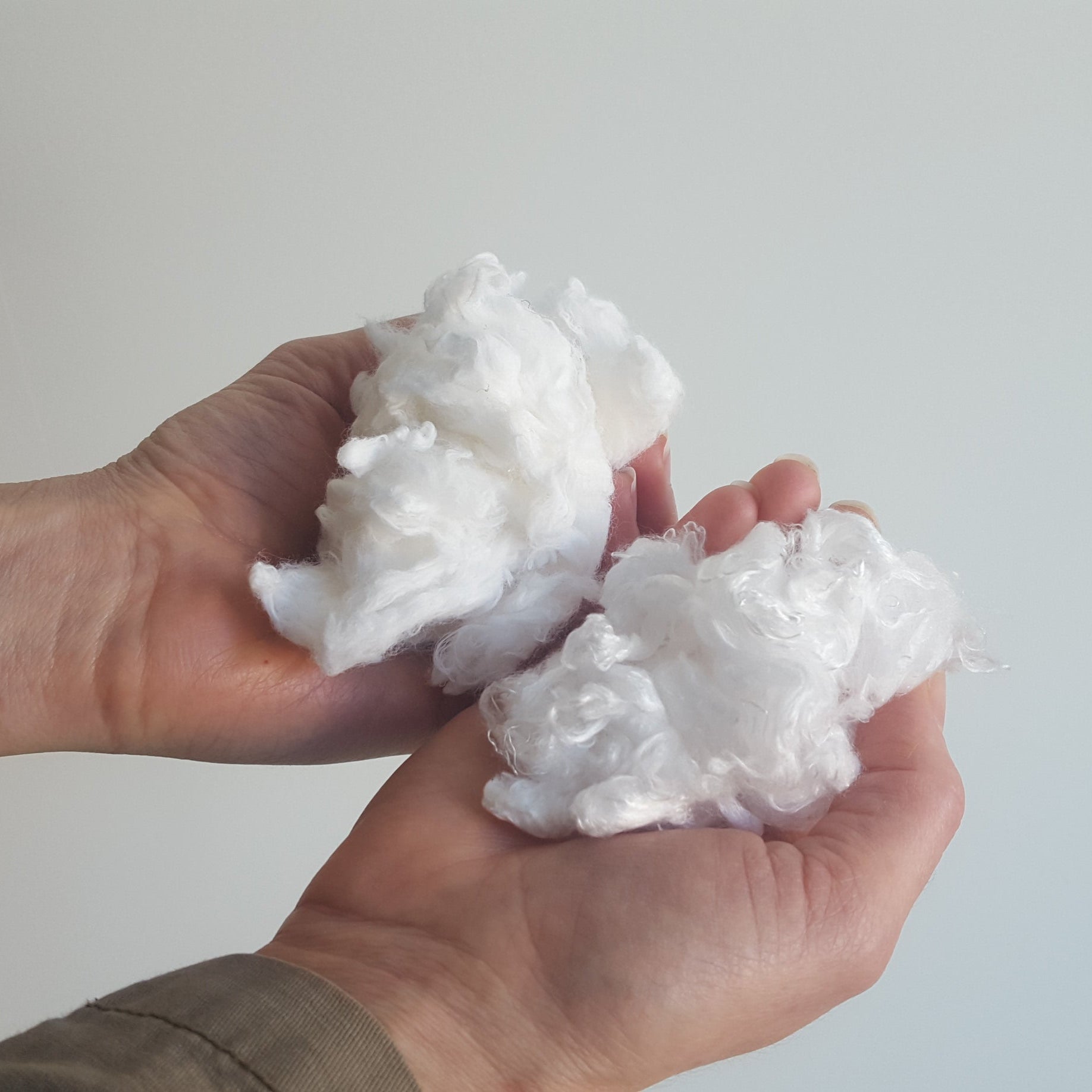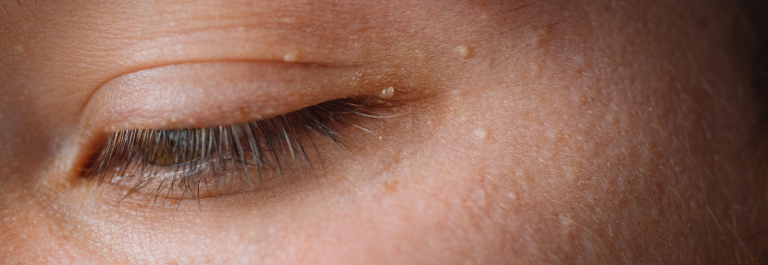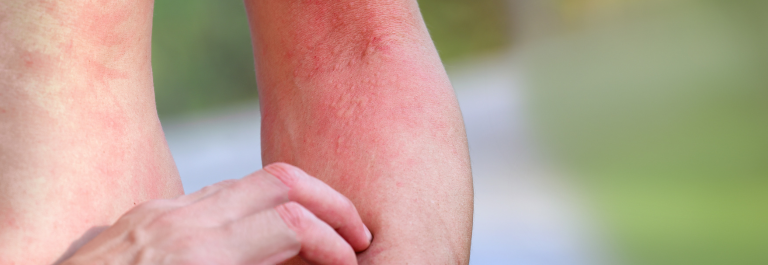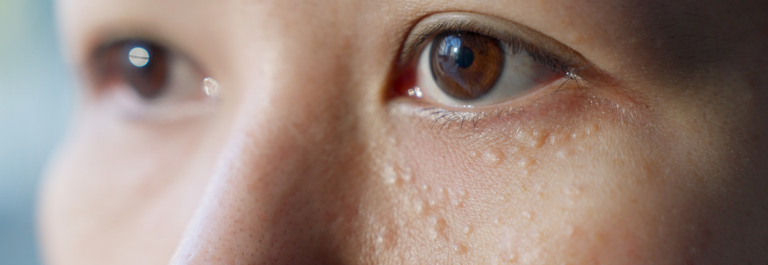Have you ever looked in the mirror and noticed a constellation of tiny white bumps that had seemingly appeared overnight? Perhaps, thinking they were pimples, you've tried to pop these bumps, only to find that they won't budge? If so, you've likely experienced a skin condition called milia, a painless but annoying skin concern characterized by small cysts under the skin. In this article, we will discuss:
-
What is milia?
-
Symptoms and causes of milia
-
Prevention and treatment of milia
Read on to learn more about milia and how to get rid of this skin condition for good.
What is Milia
Milia (also known as milk spots) are tiny white or yellow bumps on the skin's surface. They are very common in newborns (neonatal milia), but milia affects people of all ages. While they are not harmful, milia can be frustrating as they are difficult to remove. Some people find that the appearance of milia on their skin affects their self-confidence.
What Causes Milia?
Milia develop from dead skin cells that get trapped underneath the skin. Within these dead skin cells is a protein called keratin, which generally strengthens the skin. This keratin makes the milia very hard and challenging to remove. Unlike a pimple, which forms when a pore is blocked, milia are trapped underneath the skin's surface.
Types of Milia
There are several types of milia, divided into either primary milia or secondary milia.
Primary Milia
Primary milia develop spontaneously when dead skin cells become trapped underneath the surface of the skin. Types of primary milia include:
-
Benign primary milia: This very common type occurs in children and adults. Tiny cysts appear most frequently on the cheeks, eyelids, forehead, and genital area.
-
Neonatal milia (also known as congenital milia): This type of milia appears in newborns and often appears on the nose. This will generally clear up a few weeks after birth.
-
Milia en plaque: A rarer form of milia affecting women aged 40 - 70 years, milia en plaque tends to clump together and can be larger than other types of milia.
-
Multiple eruptive milia: This rare type consists of itchy, tiny white bumps on the face, upper abdomen, and upper arms.
Secondary Milia
Secondary milia form when skin damage or disease blocks oil ducts under the skin, preventing old skin cells from shedding. Some examples of secondary milia are:
-
Traumatic milia: These milia appear after damage to the skin, often caused by burns, skin grafts, or radiotherapy
-
Disease-associated milia: Certain skin diseases, such as those that cause blistering on the skin, can result in milia
-
Medication-associated milia: Some prescription medications, such as steroids, can trigger milia
Symptoms of Milia
Milia can form on any part of the body, but they appear most often around the eyes, cheeks, or nose on the face. They tend to be white or yellow and can be skin-colored on darker skin tones. Sometimes, milia clump together in clusters, but other times, they may appear individually.
Milia tend to go away on their own, but many people opt to have their milia removed by a medical professional for cosmetic reasons.
How to Prevent Milia
Milia can be stubborn, so the best way to deal with them is to prevent them before they start. Following a good skin care routine is one of the best ways to ward off milia.
Use a Natural Soap
Washing your face and body regularly with a natural cleanser will help your skin shed and prevent any dead cells of the skin from building up and causing milia. This Coconut and Sunflower Oil Bar is made with soothing ingredients like coconut oil, shea butter, and sunflower oil that remove impurities without leaving the skin dry. It's gentle enough for children and adults to use all over the body, even the most delicate parts.
Stay Moisturized
Keeping our skin moisturized can help our skin barrier regularly shed old skin cells and create new skin underneath. Use a nourishing moisturizer like this Organic Manuka Skin Soothing Cream to treat milia and other skin concerns. It's made from just six natural ingredients, including potent manuka honey. This luxurious balm has anti-microbial and anti-inflammatory properties, which prevent milia from forming. It can be used head-to-toe by every member of the family!
Professional Treatment Options to Get Rid of Milia
If you're finding that your milia does not respond to natural options, consider seeking professional treatment. It is only natural that you might want to get rid of milia if it impacts how you feel about yourself, and there are plenty of options to do this safely and effectively. A board-certified dermatologist can determine the right options to remove milia.
-
Extraction: Extraction involves a medical practitioner creating a tiny opening on the skin with a comedone extractor to remove milia.
-
Topical retinoids: Prescription retinoids can be used to speed up the natural exfoliation process of the skin, removing milia and revealing new skin underneath
-
Chemical peels: Chemical peels use ingredients like salicylic acid and glycolic acid to encourage the exfoliation of old skin cells.
Under absolutely no circumstances should you try to pop milia at home, as this could cause permanent scarring or skin infection. It's always best to seek the advice of a skin professional trained to remove milia.
Get Rid of Milia the Natural Way
It's understandable if the appearance of milia has you feeling down. Follow our tips to prevent milia and attain the gorgeous smooth skin of your dreams!










